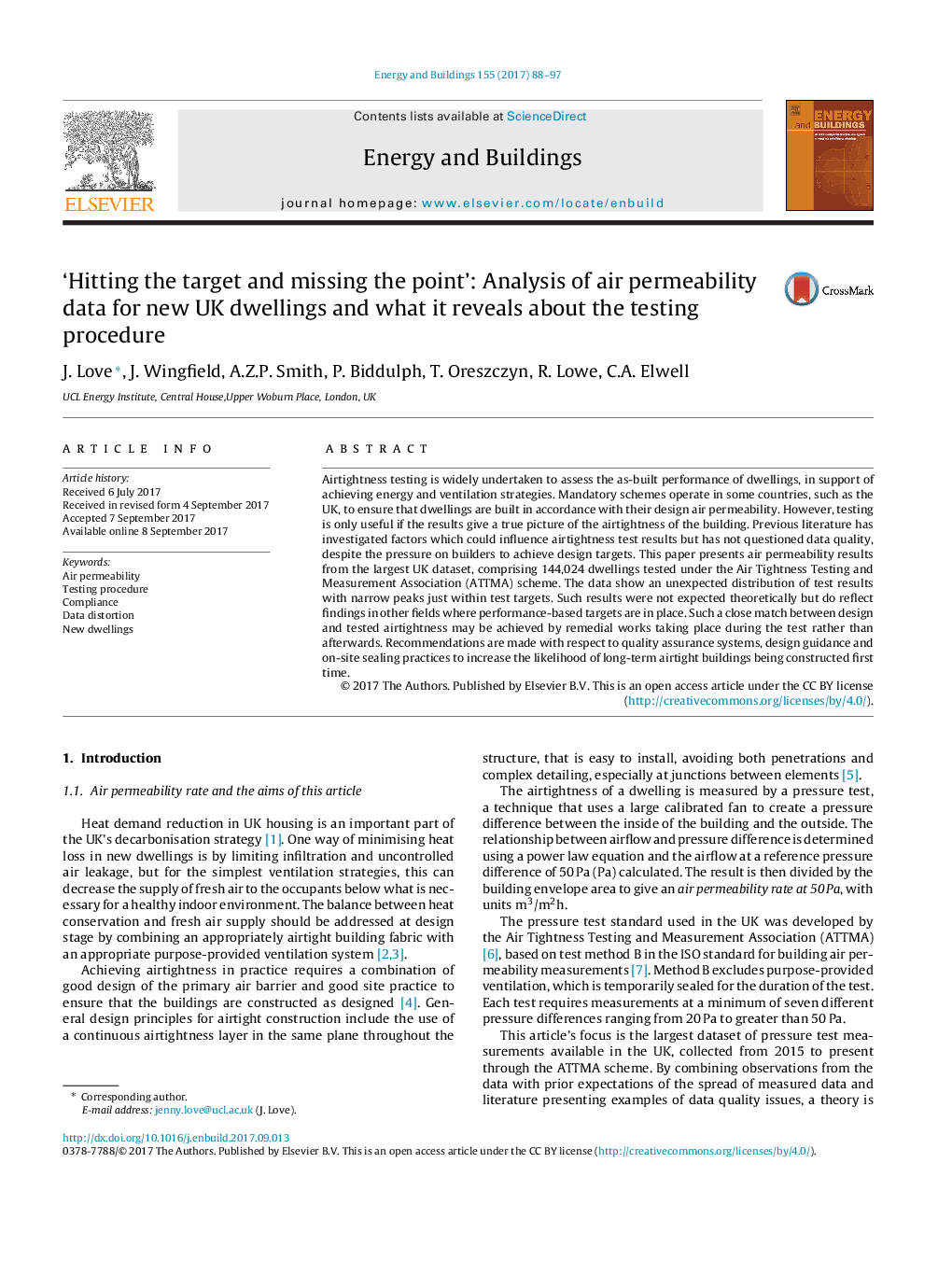| Article ID | Journal | Published Year | Pages | File Type |
|---|---|---|---|---|
| 4918844 | Energy and Buildings | 2017 | 10 Pages |
Abstract
Airtightness testing is widely undertaken to assess the as-built performance of dwellings, in support of achieving energy and ventilation strategies. Mandatory schemes operate in some countries, such as the UK, to ensure that dwellings are built in accordance with their design air permeability. However, testing is only useful if the results give a true picture of the airtightness of the building. Previous literature has investigated factors which could influence airtightness test results but has not questioned data quality, despite the pressure on builders to achieve design targets. This paper presents air permeability results from the largest UK dataset, comprising 144,024 dwellings tested under the Air Tightness Testing and Measurement Association (ATTMA) scheme. The data show an unexpected distribution of test results with narrow peaks just within test targets. Such results were not expected theoretically but do reflect findings in other fields where performance-based targets are in place. Such a close match between design and tested airtightness may be achieved by remedial works taking place during the test rather than afterwards. Recommendations are made with respect to quality assurance systems, design guidance and on-site sealing practices to increase the likelihood of long-term airtight buildings being constructed first time.
Related Topics
Physical Sciences and Engineering
Energy
Renewable Energy, Sustainability and the Environment
Authors
J. Love, J. Wingfield, A.Z.P. Smith, P. Biddulph, T. Oreszczyn, R. Lowe, C.A. Elwell,
